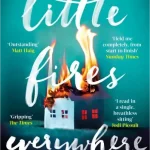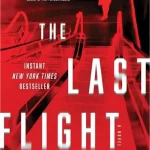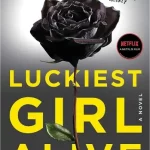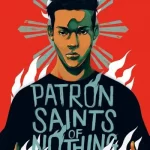
3 Sentence Summary
No Longer Human which is originally titled “Disqualified From Being Human” in Japanese is an internationally renowned novel by Japanese author Osamu Dazai. This semi-autobiographical I-novel explores the harrowing life of Yozo Oba, reflecting the author’s own battles with despair, addiction, and disconnection from society. Through vivid introspection and powerful storytelling, Dazai delves into themes of mental illness and the complexities of human existence.
Summary Read Time: Less than 5 minutes
Actual Book Length: 177
First Published in: 1948
Content Warning: The summary contains mention of adult intimate content, suicide and addiction as depicted by author in the book.
Below is the detailed yet quick No Longer Human book summary:
Part 1
The story begins with an unnamed narrator who shares pictures of a man named Yozo, captured at three stages of his life. The narrator remarks on the striking and disturbing nature of these images, where Yozo appears devoid of human characteristics, standing in a decaying room with a vacant stare. He notes that Yozo’s appeal lies not in his good looks, which many might find appealing, but in the unsettling nature of his persona.
We then explore Yozo’s personal journals, exploring his childhood filled with confusion and disillusionment towards societal norms. Instances of his eating enormous meals to appease others, his disappointment with “human dullness,” and an unfortunate encounter with his family’s staff all underline his struggle to comprehend the world around him.
His response is to mask his true nature and adopt the role of a clown, going to great lengths to entertain others. His facade is exposed by Takeichi, a quiet schoolmate, who discerns the artificiality of Yozo’s act. Determined to keep Takeichi close, Yozo befriends him, paving the way for an insightful conversation that predicts Yozo’s future allure to women.
Takeichi introduces Yozo to the realm of art, prompting a profound shift in Yozo’s perspective. A discussion around Van Gogh’s self-portrait triggers Yozo’s realization of art as an instrument to portray life’s grim realities rather than mere passive beauty. This revelation inspires Yozo to become an artist himself, using his disturbing creations to unveil his suppressed identity.
As years pass, Yozo moves to Tokyo for college, living in a townhouse owned by his politically involved father. His friend Horiki introduces him to the rebellious lifestyle of a young artist – drinking, smoking, and frequenting sex workers. Despite Yozo’s personal distaste for Horiki, he appreciates the companionship. Yozo also feigns interest in Marxist beliefs to gain popularity amongst his comrades in the Communist Party.
Part 2
Yozo’s life takes a dark turn as he becomes entrenched in heavy drinking, smoking, and errands for the Communist Party. His once comfortable lifestyle, supported by his father’s allowance, crumbles when his father decides to sell their townhouse, thrusting Yozo into a newfound poverty. Despite his deteriorating circumstances, Yozo continues to drink, numbing his fear of human interaction. His path intersects with Tsuneko, a bartender with a sympathetic heart, who shares his desolate state and invites him into her home.
In their shared misery, Yozo and Tsuneko form a connection, a bond fueled by their mutual despair. Their relationship escalates to the point where they decide to commit suicide together. However, their pact fails as Yozo survives their jump into the ocean while Tsuneko tragically drowns.
Waking up in the hospital, Yozo is arrested for being an “accomplice to a suicide,” but he’s released into the care of Flatfish, an old family friend, due to his frail health. His future is uncertain, as his father cuts off communication and the university expels him.
Living with Flatfish proves challenging, leading to a confrontation over Yozo’s lack of life direction, resulting in Yozo’s hasty declaration of his desire to be a painter. This announcement only elicits laughter from Flatfish, causing Yozo to flee from his house.
He finds temporary refuge with his friend Horiki, and eventually with Shizuko, a woman he meets at Horiki’s. Shizuko, taken by Yozo’s melancholy, welcomes him into her home, where he lives with her and her daughter, Shigeko. Yozo tries to shake off his restlessness by illustrating for Shizuko’s magazine, though his earnings mainly support his addiction. Despite plans for him to marry Shizuko, Yozo chooses to leave upon hearing Shigeko’s longing for her “real” father.
Part 3 – How Does “No Longer Human” Book End?
Yozo finds temporary solace in a Kyobashi bar, befriending a young woman, Yoshiko. During a particularly inebriated episode, Yozo proposes marriage to Yoshiko, intrigued by her innocence. Yoshiko consents on the grounds of Yozo forgoing alcohol. While Yozo’s promise crumbles at daybreak, Yoshiko’s unwavering trust lets their relationship bloom into a marriage.
The couple settles into a content routine, sparking in Yozo a flicker of hope for a happy life. The sudden reappearance of Horiki, however, plunges Yozo back into his old drinking habits. One drunken night unveils a horrifying scene to Yozo: Yoshiko being violated by a man while he helplessly watches. This traumatic event pushes Yozo deeper into his addiction.
A close brush with death through an overdose of sleeping pills doesn’t deter Yozo. H returns from a supposed recuperative trip in an even more deteriorated state. In his search for medication, he encounters an elderly pharmacist, whose mutual sorrow leads her to swap his alcohol addiction with a morphine one. His life spirals out of control, and another suicide attempt lands him in a psychiatric ward.
After his release, he’s sent to the countryside to live a quiet life under the supervision of an older maid. Yozo’s story, a ten-year-old narrative in notebooks, reaches an unnamed speaker through the bartender from Kyobashi, who leaves Yozo’s tragic life to speak through the unaltered pages.





